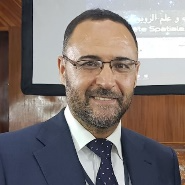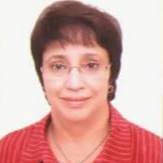International Journal of Modern Education and Computer Science (IJMECS)
IJMECS Vol. 11, No. 3, 8 Mar. 2019
Cover page and Table of Contents: PDF (size: 314KB)
Computer Science Program in Moroccan Secondary Schools: Curricula Analysis
Full Text (PDF, 314KB), PP.10-15
Views: 0 Downloads: 0
Author(s)
Index Terms
Computer science in Morocco, Computer science discipline, Computer science curricula
Abstract
The methodology of teaching informatics is a reflection subject that arouses increasing interest both locally and internationally. Debates on the curricula of the discipline are always at the center of many discussions amongst computer scientists and other concerned educators. Teaching Computer science in secondary schools is increasingly perceived as having similar status like teaching mathematics, life and earth sciences, chemistry, and physics. In this paper we report and analyze the current status of computer science education in Moroccan secondary schools in light of the governing official instructions by the ministry of education. We also discuss the generalization of computer education in Moroccan secondary schools probing the emergence of teaching it as a disciplinary subject rather than a tool in other fields. Our analysis shows that teaching informatics in Morocco is not conform to the set ministerial objectives and it necessitate a reform in both its teaching methodology and content.
Cite This Paper
Ibrahim Ouahbi, Hassane Darhmaoui, Fatiha Kaddari, Abdellah Bemmouna, " Computer Science Program in Moroccan Secondary Schools: Curricula Analysis", International Journal of Modern Education and Computer Science(IJMECS), Vol.11, No.3, pp. 10-15, 2019.DOI: 10.5815/ijmecs.2019.03.02
Reference
[1]Dagiene, V., & Stupuriene, G. (2016). Informatics concepts and computational thinking in K-12 education: A Lithuanian perspective. Journal of Information Processing, 24(4), 732-739.
[2]Fluck, A., Webb, M., Cox, M., Angeli, C., Malyn-Smith, J., Voogt, J., & Zagami, J. (2016). Arguing for computer science in the school curriculum. Journal of Educational Technology & Society, 19(3), 38.
[3]Kanemune, S., Shirai, S., & Tani, S. (2017). Informatics and Programming Education at Primary and Secondary Schools in Japan, Olympiads in Informatics, Vol. 11, 143–150.
[4]Webb, M., Davis, N., Bell, T., Katz, Y. J., Reynolds, N., Chambers, D. P., & Sysło, M. M. (2017). Computer science in K-12 school curricula of the 2lst century : Why, what and when?. Education and Information Technologies, 22(2), 445-468.
[5]Arcos, G., Aguirre, G. L., Hidalgo, B., Rosero, R. H., & Gómez, O. S. (2018). Current Trends of Teaching Computer Programming in Undergraduate CS Programs: A Survey from Ecuadorian Universities. KnE Engineering, 1(2), 253-275.
[6]Baron, G. L., Bruillard, E., & Drot-Delange, B. (2015). Informatique en éducation: perspectives curriculaires et didactiques. Presses Universitaires Blaise-Pascal.
[7]Ouahbi, I., Darhmaoui, H., Kaddari, F., Bemmouna, A., Elachqar, A., & Lahmine, S. (2015). Un aperçu sur l’enseignement de l’informatique au Maroc: Nécessité d’une réforme des curricula An overview of teaching informatics in Morocco: The need for a curriculum reform. Frantice.net, (11), 51-66.
[8]Vrachnos, E., & Jimoyiannis, A. (2017). Secondary education students’ difficulties in algorithmic problems with arrays: An analysis using the SOLO taxonomy. Themes in Science and Technology Education, 10(1), 31-52.
[9]Hubwieser, P., Armoni, M., Brinda, T., Dagiene, V., Diethelm, I., Giannakos, M. N., Knobelsdor, M., Magenheim, J., Mittermeir, R., & Schubert, S. (2011). Computer Science/informatics in Secondary Education. In Proceedings of the 16th annual conference reports on Innovation and technology in computer science education-working group reports (pp. 19-38). ACM.
[10]Sturman, L., and Sizmur, J. (2011). International comparison of computing in schools. Slough, UK: National Foundation for Educational Research (NFER).
[11]Diethelm, I., Arndt, J., Dünnebier, M., & Syrbe, J. (2013). Informatics in schools: local proceedings of the 6th International Conference ISSEP 2013; selected papers; Oldenburg, Germany.
[12]Anderson, J. (2010). ICT transforming education: A regional guide. Published by UNESKO Bangkok, 120.
[13]Seehorn, D., Carey, S., Fuschetto, B., Lee, I., Moix, D., O'Grady-Cunniff, D., Boucher Owens, B., Stephenson, C., & Verno, A. (2011). CSTA K--12 Computer Science Standards: Revised 2011.
[14]Wilson, C., Sudol, L. A. S., Stephenson, C., Stehlik, M., Acm, & Csta. (2011). Running on empty: The Failure to Teach K-12 Computer Science in the Digital Age. Inquiry : A Journal of Medical Care Organization, Provision and Financing, 48(3), 177–82.
[15]Cheung, A. C., & Slavin, R. E. (2013). The effectiveness of educational technology applications for enhancing mathematics achievement in K-12 classrooms: A meta-analysis. Educational Research Review, 9, 88-113.
[16]Pernia, E. E. (2008). Strategy framework for promoting ICT literacy in the Asia-Pacific region. Publication of UNESCO Bangkok Communication and Information Unit. Bangkok: Asia and Pacific Regional Bureau for Education, 4-20.
[17]Wilson, A., Hainey, T., & Connolly, T. M. (2013). Using Scratch with Primary School Children: An Evaluation of Games Constructed to Gauge Understanding of Programming Concepts. International Journal of Game-Based Learning (IJGBL), 3(1), 93-109.
[18]Stolee, K. T., & Fristoe, T. (2011). Expressing computer science concepts through Kodu game lab. In Proceedings of the 42nd ACM technical symposium on Computer science education (pp. 99-104). ACM.
[19]Dagiene, V., Jevsikova, T., Schulte, C., Sentance, S., & Thota, N. (2013). A comparison of current trends within Computer Science teaching in school in Germany and the UK. In Informatics in Schools: Local Proceedings of the 6th International Conference ISSEP 2013–Selected Paper (p. 63).
[20]Gańko-Karwowska, M. (2004). Pourquoi l'informatique et la technologie de l'information en tant que matière de formation en Pologne?. Récupéré le 19 Avril 2015 du site de l’EPI : http://www.epi.asso.fr/revue/articles/a0405a.htm
[21]Sysło, M. M., & Kwiatkowska, A. B. (2008). The Challenging face of informatics education in Poland. Informatics Education-Supporting Computational Thinking (pp. 1-18). Springer Berlin Heidelberg.
[22]Sysło, M. M., & Kwiatkowska, A. B. (2015, September). Introducing a new computer science curriculum for all school levels in Poland. In International Conference on Informatics in Schools: Situation, Evolution, and Perspectives (pp. 141-154). Springer, Cham
[23]Kanemune, S., Shirai, S., & Tani, S. (2017). Informatics and Programming Education at Primary and Secondary Schools in Japan. Retrieved from: https://ioinformatics.org/journal/v11_2017_143_150.pdf
[24]Bogliolo, A., Delpriori, S., Klopfenstein, L. C., & Paolini, B. D. (2016). Immersive Coding: Innovative tools and formats for large-scale coding events. EDULEARN16 Proceedings.
[25]Rak, I. (2002). « Education technologique au Maroc La coopération franco-marocaine ». Revue Education technologique n° 18 (pp. 25-30). Retrieved January 2, 2019 from http://techno-hadf.pagesperso-orange.fr/edu/8-biblio-classement/HADF_8-3_Articles_publies_par_I.RAK.doc
[26]Rak, I., & Hariri, A. (2006). Maroc : l'informatique au collège, nouvelle discipline d'enseignement. Retrieved January 2, 2019 from http://perso.orange.fr/techno-hadf/edu/3-college_etranger_1985-20__/HADF_3-9_Maroc_l_informatique_nouvelle_discipline_d_enseignement.doc
[27]MEN. (2005a). Ministère d’Education Nationale, Programme et instructions officielles pour l’enseignement de l’informatique aux troncs communs.
[28]MEN. (2011). Ministère d’Education Nationale, Programme et instructions officielles pour l’enseignement au cycle primaire.
[29]El ouidadi, O., Lakdim, A., Essafi, K., Sendide, K., & Depiereux, E. (2013). Principaux facteurs influençant les usages des TICE chez des enseignants marocains. Frantice.net, (6), 37-52.
[30]Bemmouna, A., Chetouani, A., & El yacoubi, T. (2013). L’informatique pas à pas. Collection de l’enseignement de l’informatique au primaire (du 3ème au 6ème). Rabat: Dar Nachr Almaarifa.
[31]MEN. (2009). Ministère d’Education Nationale, Programme et instructions officielles pour l’enseignement secondaire collégial.
[32]MEN. (2005b). Ministère d’Education Nationale, Programme et instructions officielles pour l’enseignement en 1ère année du baccalauréat sciences économiques et sciences de gestion comptable.
[33]MEN. (2007). Ministère d’Education Nationale, Programme et instructions officielles pour l’enseignement en 2ème année du baccalauréat sciences économiques et sciences de gestion comptable.



